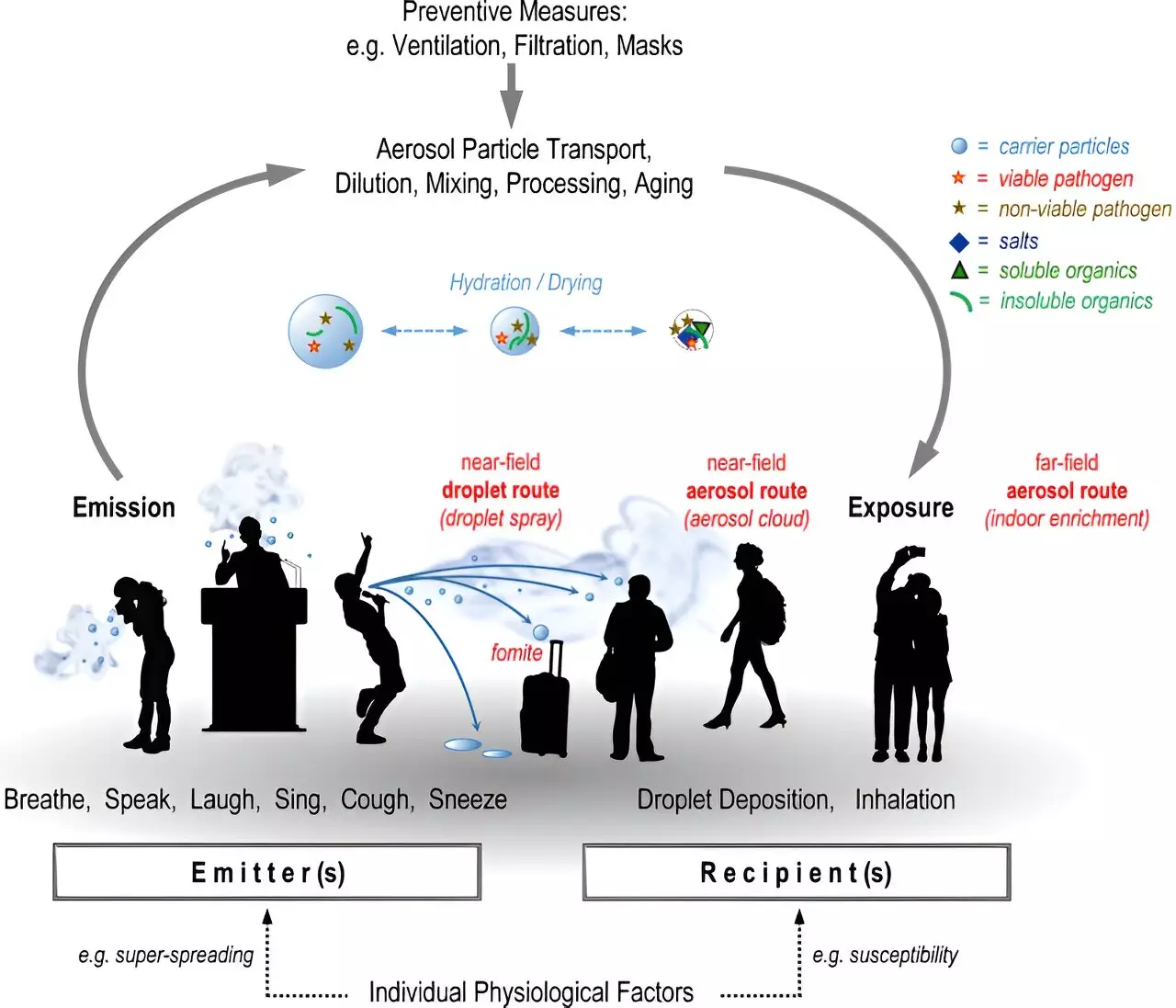The ongoing COVID-19 pandemic highlighted the urgent need for comprehensive research on respiratory droplets and their role in disease transmission. A team of scientists from the Max Planck Institute for Chemistry, in collaboration with experts from various other institutions, has taken up the task of collating publicly available information on droplet properties. Their efforts aim to develop effective mitigation strategies to combat non-contact infectious diseases. In this article, we will closely analyze their research and explore the potential impact of their findings.
In the early days of the pandemic, individuals from diverse scientific fields were compelled to contribute to the global efforts in combating the virus. Atmospheric scientist Christopher Pöhlker and cloud scientist Mira Pöhlker embarked on a mission to investigate the nature of droplet size and its relationship to airborne disease transmission. Surprisingly, they discovered a dearth of research in this area, emphasizing the necessity of their own investigation.
Recognizing the interdisciplinary nature of the challenge, Christopher and Mira Pöhlker joined forces with specialists from different fields to form a formidable research team. Together, they aimed to gather existing knowledge on respiratory droplets, collate it, and present it in a manner that would be valuable to traditional medical researchers.
The initial step for the research team involved a thorough search for available information on infectious droplet size. Through diligent exploration and analysis, they sought to build a comprehensive understanding of the subject. Subsequently, the team embarked on creating a parameterization scheme that could effectively collate the gathered data.
To facilitate the organization of droplet information, the team developed a classification system based on different modes. Each mode corresponded to a specific size range of droplets generated in different parts of the body. Rather than using names, the team defined five types according to the size of droplets, ranging from less than 0.2 µm to 130 µm. Furthermore, each type was associated with the location where it originated, such as the lungs, mouth, tongue or lips, and the larynx-trachea.
While the team managed to establish a classification system, there still remains a critical gap regarding data that links droplet size to infection potential. The correlation between these factors remains elusive, underscoring the need for further research. The team acknowledges the requirement for human studies to complete their collation process, which holds significant promise in the fight against infectious diseases.
Once the process of collation is complete, the accumulated knowledge will serve as a valuable resource for medical researchers. This comprehensive database on droplet properties will guide the development of effective anti-transmission measures and mitigation strategies against respiratory infections. The insights gained from these findings can potentially revolutionize the current understanding of disease transmission.
The journey undertaken by the team at the Max Planck Institute for Chemistry, alongside their collaborators, is a testament to the power of interdisciplinary research. By diligently collating available data on droplet properties, they aim to equip medical researchers with the necessary tools to combat infectious diseases effectively. The pursuit of knowledge in the realm of respiratory droplets will undoubtedly contribute to the development of innovative strategies for disease prevention and control. As we move forward, it is imperative to support and encourage such endeavors, as they hold the potential to reshape our understanding of infectious diseases and safeguard public health.



Leave a Reply